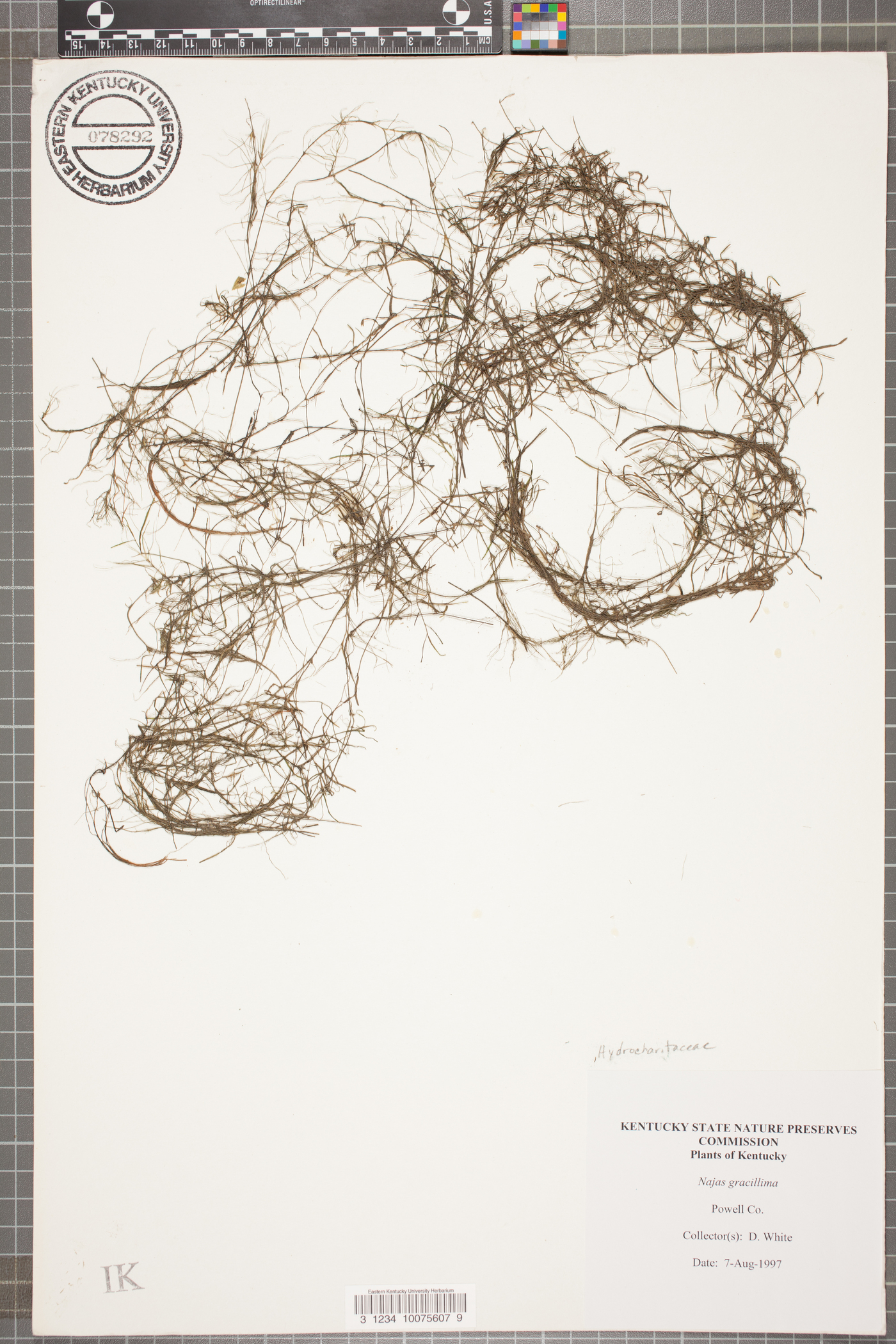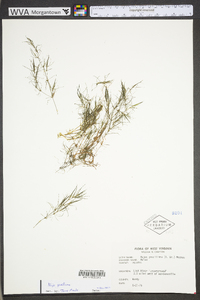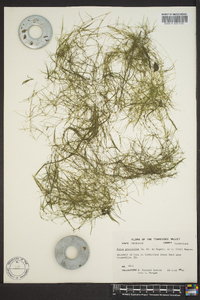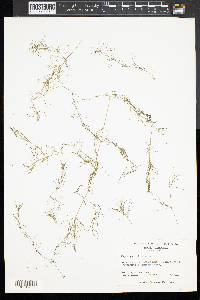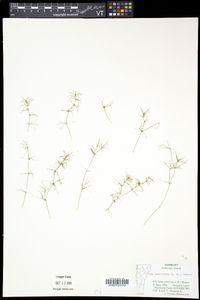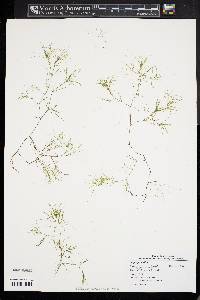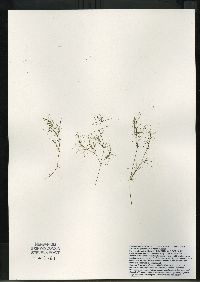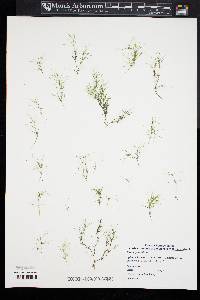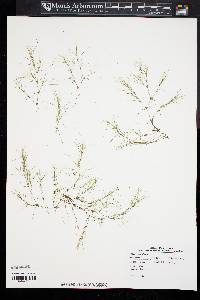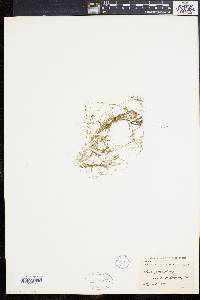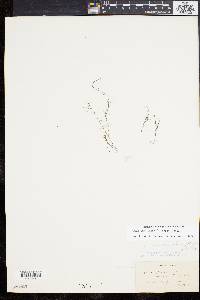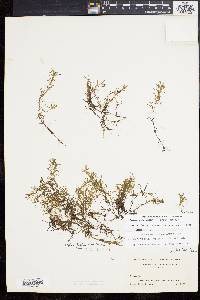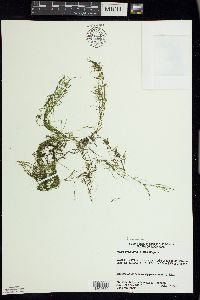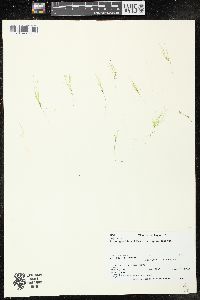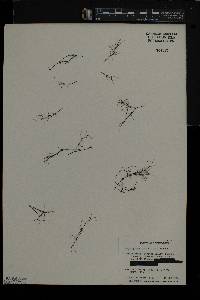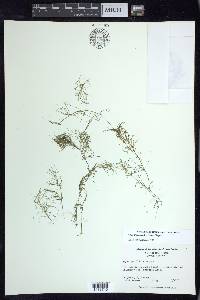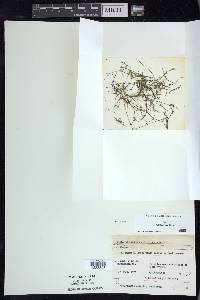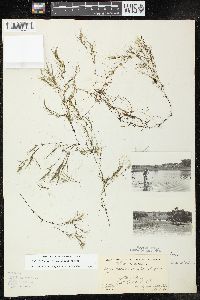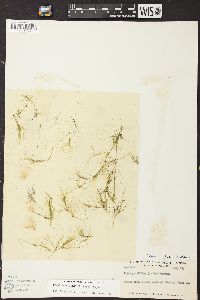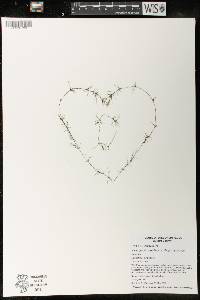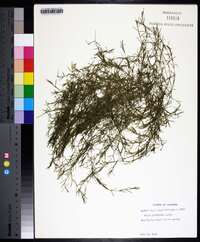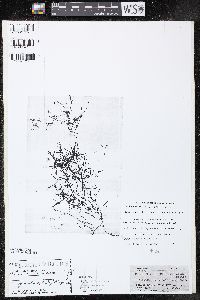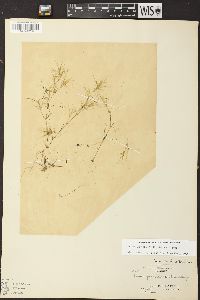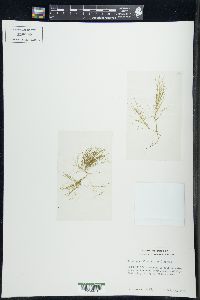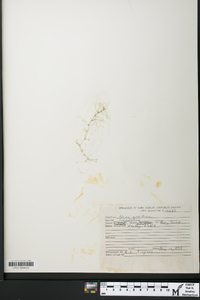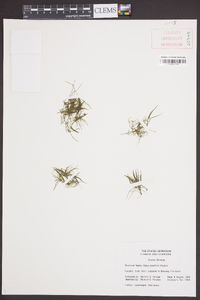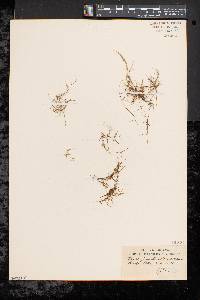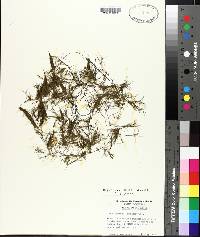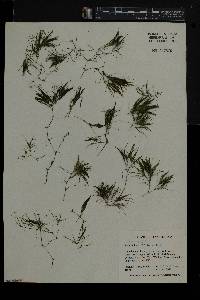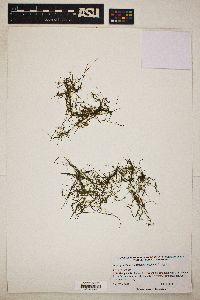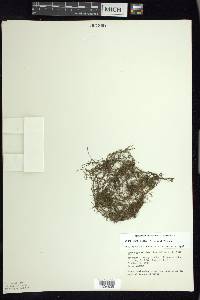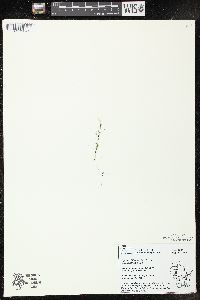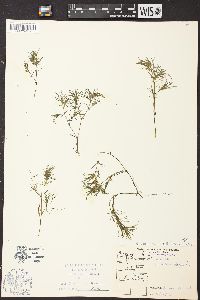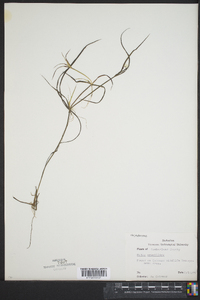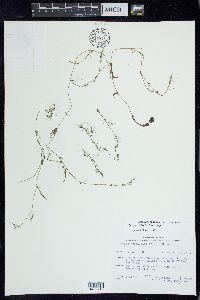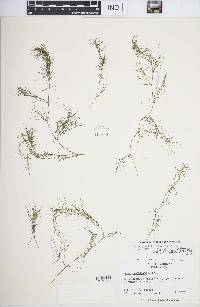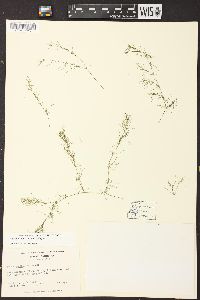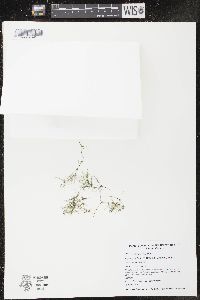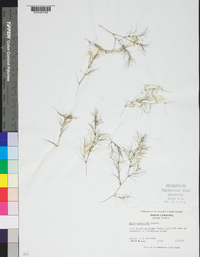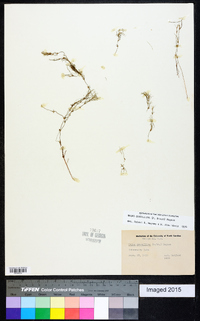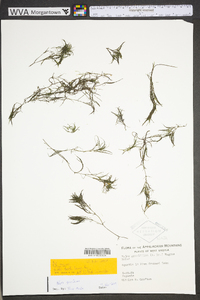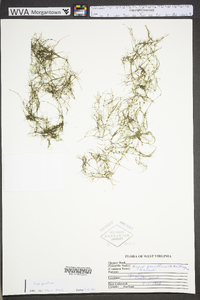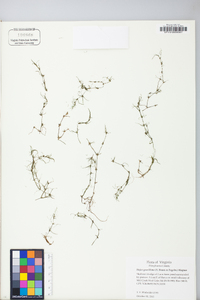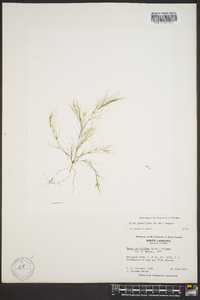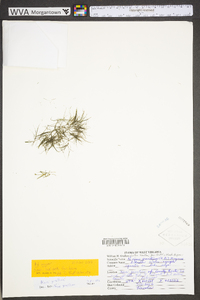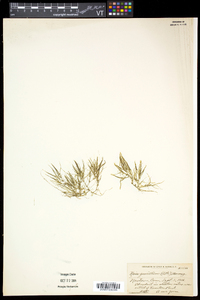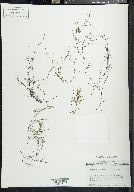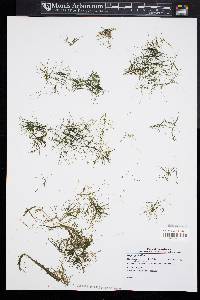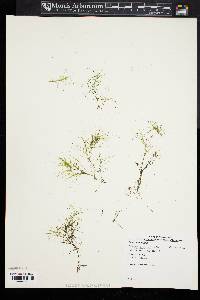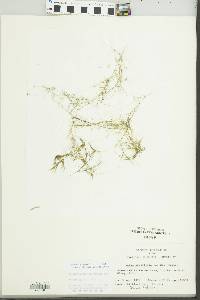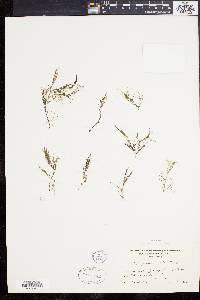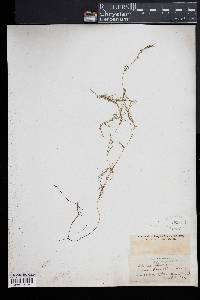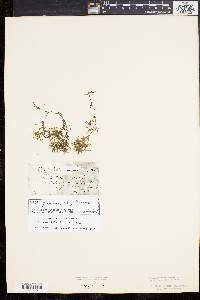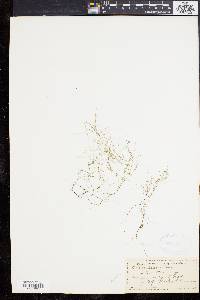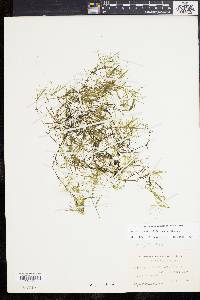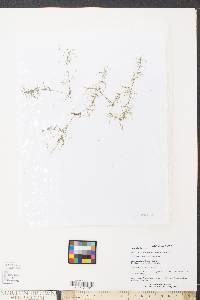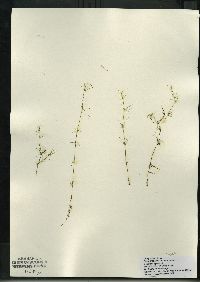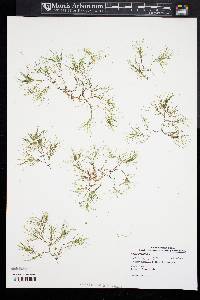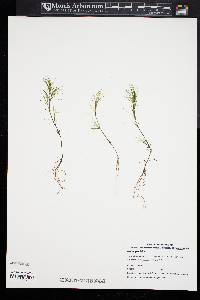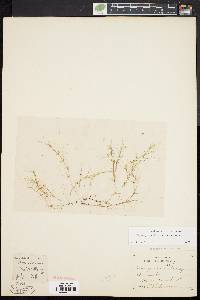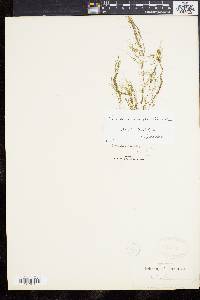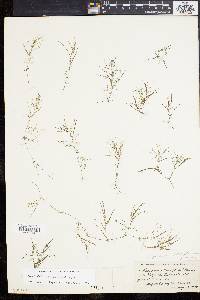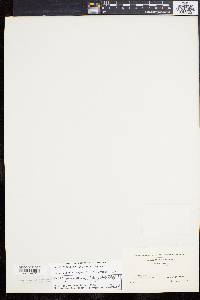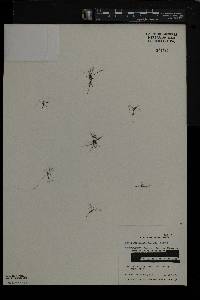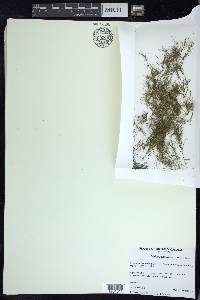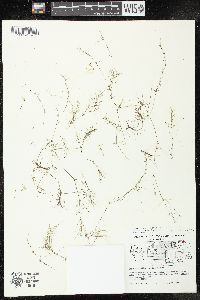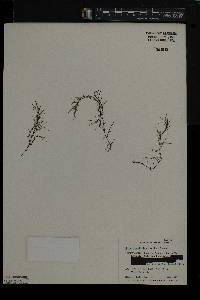
|
|
|
|
Family: Hydrocharitaceae
Slender Waternymph
|
Stems slightly branched distally, 4.5--48 cm ´ 0.2--0.7 mm; internodes 0.1--3.2 cm, without prickles. Leaves spreading to ascending with age, 0.6--2.8 cm, lax in age; sheath 0.5--1.5 mm wide, apex truncate; blade 0.1--0.5 mm wide, margins minutely serrulate, teeth 13--17 per side, apex acute with 2--3 teeth, teeth unicellular; midvein without prickles abaxially. Flowers 1--3 per axil, staminate and pistillate on same plants. Staminate flowers in distal axils, 1.5--2 mm; involucral beaks 2-lobed, 0.8 mm; anthers 1-loculed, 1.3 mm. Pistillate flowers distal to proximal on plant, 0.5--2.7 mm; styles 0.3--1.5 mm; stigmas 2-lobed. Seeds not recurved, light brown, fusiform, 2--3.2 ´ 0.4--0.7 mm, apex with style situated offat center; testa dull, 3 cell layers thick, pitted; aeroleareoles regularly arranged in 40 longitudinal rows, not ladderlike, 4-angled, longer than broad, end walls raised. 2n = 24, 36. Flowering summer--fall. Soft water lakes; 0--200 m; Man., Ont., Nfld. and Labr. (Nfld.), N.S.; Ala., Calif., Conn., Del., D.C., Ill., Ind., Ky., Maine, Md., Mass., Mich., Minn., Mo., N.H., N.J., N.Y., N.C., Ohio, Pa., R.I., Tenn., Vt., Va., Wis.; Eurasia. No specimens were seen from in Alberta, Manitoba, or Quebec, but the species is to be expected there. Najas gracillima is most similar to N. minor, especially in vegetative condition. Najas gracillima, however, can be separated from the latter species by its style arising off-center at the apex of the ovary wall and by its aeroleareoles being longer than broad. Late in the growing season, the leaves of N. minor become recurved; those of N. gracillima do not.
Monoecious; light green; stems 0.5-5 dm, only 0.2-0.7 mm thick, sparingly branched; lvs lax, 0.5-3 cm נ0.1-0.5 mm, spreading to ascending, minutely serrulate with 13-17 unicellular teeth per side, the base abruptly expanded and minutely fringe- toothed across the subtruncate summit (but not down its sides); anthers monothecal and with a single microsporangium; style offset from the apex of the fr; seeds 2.0-3.2 mm, light brown, fusiform-cylindric, pitted with 20-45 longitudinal rows of minute areolae a little higher than wide. Oligotrophic, soft-water lakes; N.S. to Ala., w. to Minn. and Io., intolerant of pollution and now become rare. Gleason, Henry A. & Cronquist, Arthur J. 1991. Manual of vascular plants of northeastern United States and adjacent Canada. lxxv + 910 pp. ©The New York Botanical Garden. All rights reserved. Used by permission. From Flora of Indiana (1940) by Charles C. Deam This species was reported in 1876 by Schneck as found in the "deeper ponds" of the Lower Wabash Valley. Our only specimens were collected in 1935 by Kriebel in Lawrence County. …… Indiana Coefficient of Conservatism: C = 10 Wetland Indicator Status: OBL |
This project was made possible in part by the Institute of Museum and Library Services [MG-70-19-0057-19].
Powered by Symbiota

